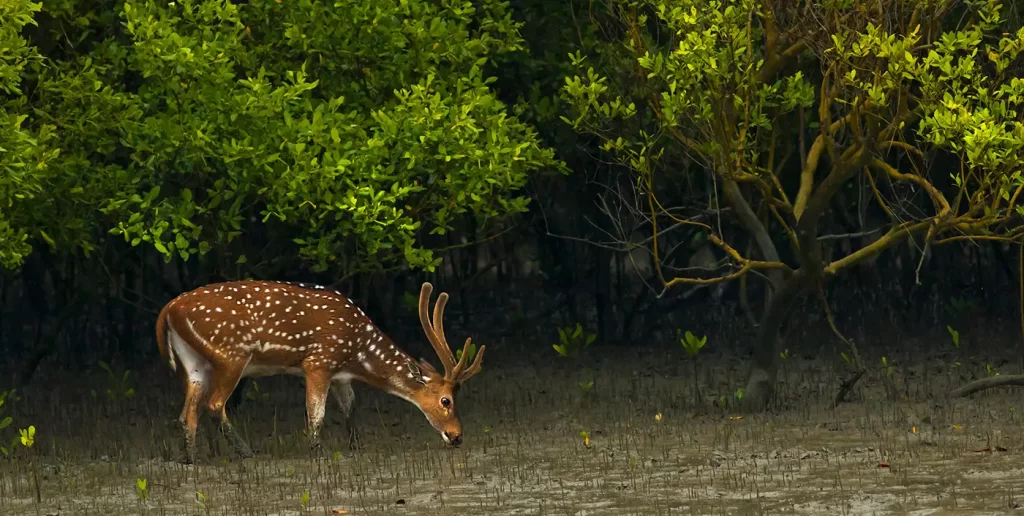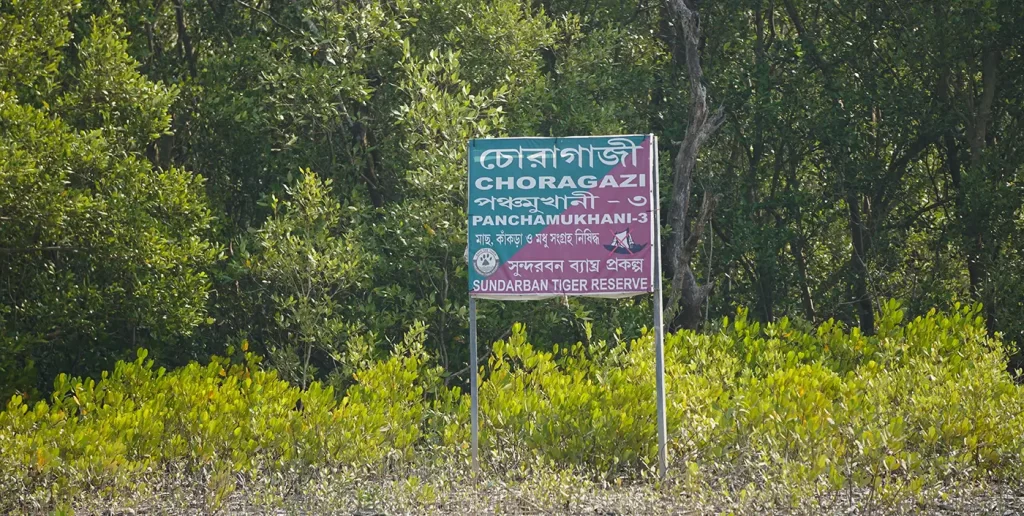The Sundarbans is one of the most unique and ecologically diverse regions in the world, known for its vast mangrove forests and intricate network of waterways. It is located in the delta of the Ganges, Brahmaputra, and Meghna rivers in the Bay of Bengal, spanning across India and Bangladesh. The name “Sundarbans” is believed to be derived from the Sundari trees (Heritiera fomes), which are one of the dominant species of mangroves found in the area.
Here are some key features and facts about the Sundarbans:
1. Mangrove Ecosystem: The Sundarbans is the largest mangrove forest in the world, covering an area of approximately 10,000 square kilometers (3,900 square miles). Mangroves are salt-tolerant trees and shrubs that grow in coastal saline or brackish water environments, serving as a vital habitat for numerous plant and animal species.

2. Biodiversity: The Sundarbans is a UNESCO World Heritage Site and a Ramsar Wetland of International Importance due to its rich biodiversity. It is home to various flora and fauna, including several endangered species such as the Bengal tiger, Indian python, saltwater crocodile, spotted deer, and the critically endangered river terrapin.
3. Royal Bengal Tiger: The Sundarbans are famous for their population of the majestic Royal Bengal Tiger (Panthera tigris tigris). The mangrove forests provide an ideal habitat for these tigers, which have adapted to a semi-aquatic lifestyle, swimming through the waterways in search of prey.

4. Avian Diversity: The region is a paradise for birdwatchers, boasting over 300 bird species, including the endangered masked finfoot, Mangrove Whistler, and the large saltwater crocodile-hunting osprey.
5. Unique Ecosystem: The Sundarbans’ ecosystem is influenced by tides, with extensive intertidal mudflats and tidal waterways that constantly change with the ebb and flow of the tides. The intricate network of water channels is often compared to a natural maze.
6. Human Settlements: Despite being a protected area, the Sundarbans are also home to numerous human settlements. Many local communities depend on the forest’s resources for their livelihoods, including fishing, honey collection, and timber extraction.

7. Environmental Challenges: The people of Sundarbans are confronted with a range of environmental challenges, including rising sea levels, heightened salinity, the impacts of climate change, and human-induced threats such as poaching and habitat destruction. The West Bengal government endeavors to protect the villagers as much as possible. However, the villagers themselves believe that Mother Nature will always protect them.
8. Tourism: The Sundarbans attract nature enthusiasts, researchers, and tourists seeking to explore its unparalleled beauty and observe its diverse wildlife. Eco-tourism initiatives are in place to promote responsible tourism that supports conservation efforts and benefits local communities.
The Sundarbans remain a vital natural treasure, playing a crucial role in maintaining coastal ecosystems, supporting biodiversity, and providing livelihoods to local communities. It serves as a powerful reminder of the importance of preserving our natural heritage for generations to come.
Contact Local guide and Wildlife tour operator –
- Sukanta Bag PH +91 63637 35286
- Malay Mistry PH. +91 78905 56383




Thank you for providing me with these article examples. May I ask you a question?
yes, please